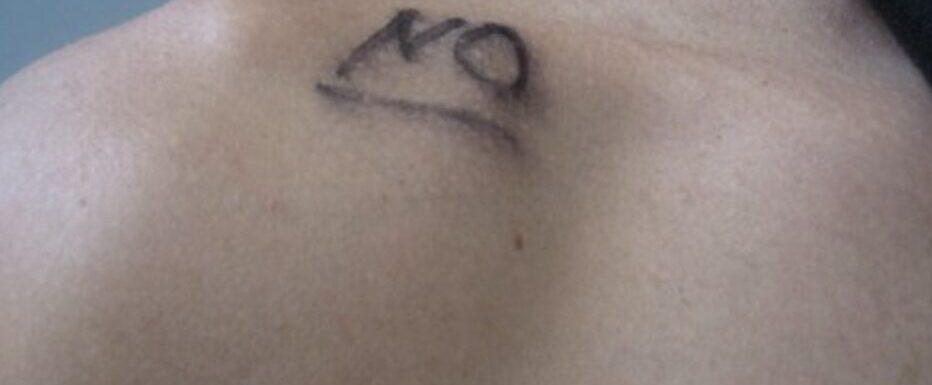Below is a picture sent by a friend. He broke his collarbone in a bike accident. Clearly, it was the other collarbone, not shown.
What we see here is a normal, intact collarbone:

The patient asked:
Shouldn't they have been able to tell which one was broken?
That was probably true in this case, but it's a generally accepted patient safety practice to mark the surgical site (in this case they marked the “wrong” side). It's probably better to ALWAYS follow the process, even when it seems silly, instead of picking and choosing when you have to mark the site. When it's an ACL repair, it's less obvious which knee was damaged and a wrong-site error could occur.
More info on “Correct Site Surgery” (a positive view) from the AORN: LINK
Hey Surgeon, Don't Cut Here: Navigating the Perilous Waters of Surgical Errors
In the high-stakes arena of surgery, the margin for error is razor-thin. Despite monumental advancements in medical science and surgical techniques, the specter of surgical errors looms large, casting a shadow over the sanctity of patient safety. It’s a stark reminder of our collective vulnerability, underscoring the imperative need for vigilance, precision, and continuous improvement in healthcare practices.
The Unseen Toll of Surgical Errors
Each year, countless patients place their lives in the hands of surgeons, entrusting them with their well-being and future. Yet, in rare but devastating instances, what should be a routine procedure can veer off course, leading to outcomes that range from the benign to the catastrophic. Surgical errors, while statistically uncommon, exact a heavy toll on patients and healthcare providers alike, manifesting not just in physical injury but also in psychological trauma, financial burden, and eroded trust in the healthcare system.
A Closer Look at Surgical Missteps
The nature of surgical errors can vary widely, but they often include:
- Wrong-Site Surgery: Operating on the wrong limb or organ, a mistake that is as baffling as it is preventable.
- Wrong-Patient Surgery: A breakdown in patient verification processes can lead to performing a procedure intended for another patient.
- Foreign Objects Left Inside the Patient: Surgical instruments or materials inadvertently left behind, necessitating further intervention.
- Incorrect Surgical Procedure: Patients receive the wrong procedure, sometimes with irreversible consequences.
Understanding the Root Causes
Delving into the causes of these errors, it becomes apparent that they are multifaceted, often stemming from a combination of systemic vulnerabilities and human factors:
- Communication Failures: Miscommunication among surgical teams about the procedure, patient, or site can lead to errors.
- Procedural Noncompliance: Deviations from established protocols and checklists compromise safety.
- Human Factors: Fatigue, stress, and cognitive biases can impair decision-making and performance.
Fostering a Culture of Safety
To confront and mitigate these challenges, the adoption of a culture of safety is essential—a culture where every member of the surgical team feels empowered to voice concerns and where patient safety is paramount. Implementing comprehensive safety protocols, including surgical checklists and team briefings, has shown promise in reducing the incidence of errors.
Moreover, embracing technological solutions like barcoding for patient identification and surgical site marking can provide additional layers of verification, further safeguarding against mistakes.
The Path Forward
The journey toward eliminating surgical errors is ongoing, requiring the commitment of healthcare institutions, practitioners, and patients alike. It involves not just the adoption of best practices and innovations but also a fundamental shift towards transparency, learning from mistakes, and continuously striving for improvement.
As we navigate this path, it's imperative to remember that behind every statistic is a human story. The quest to eradicate surgical errors is not just a professional obligation but a moral one, underscoring our collective commitment to do no harm and to ensure that every patient receives the safe, compassionate care they deserve.

